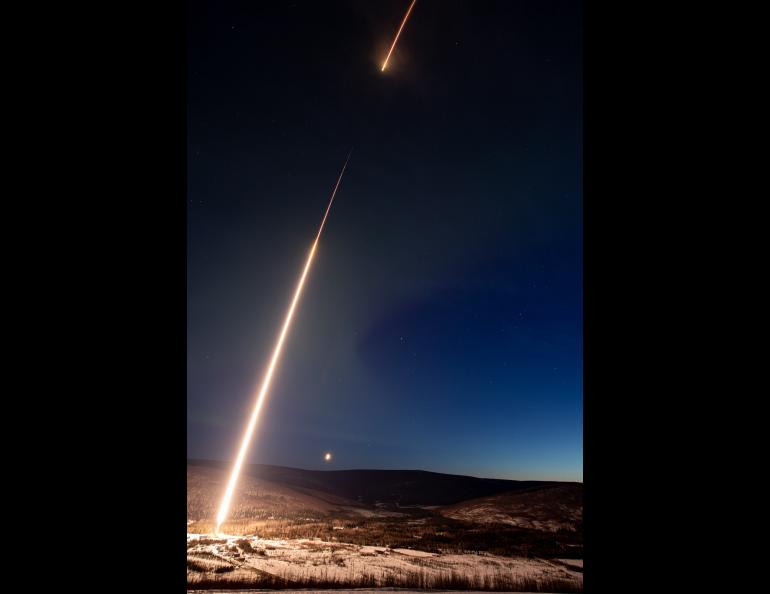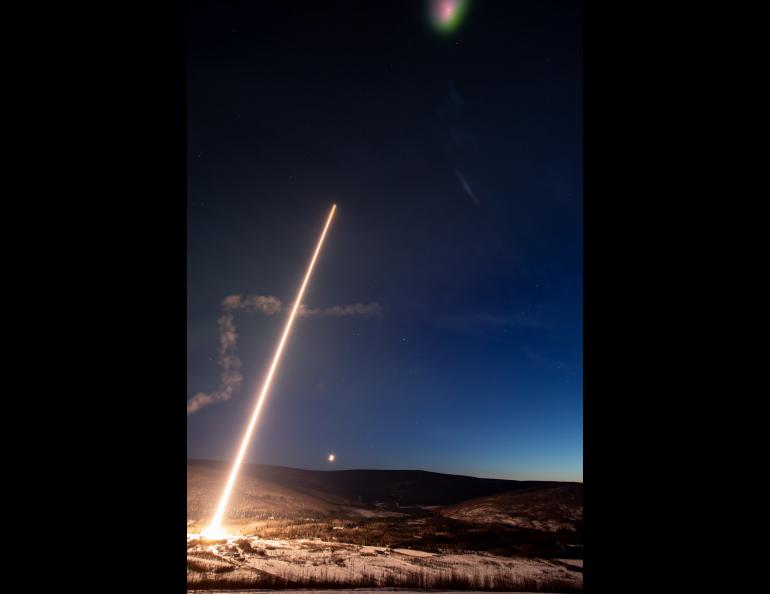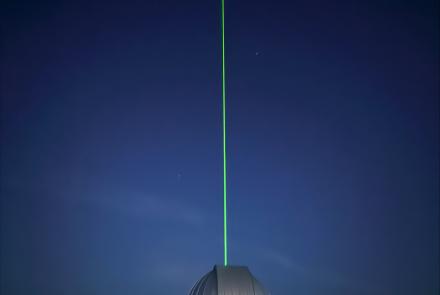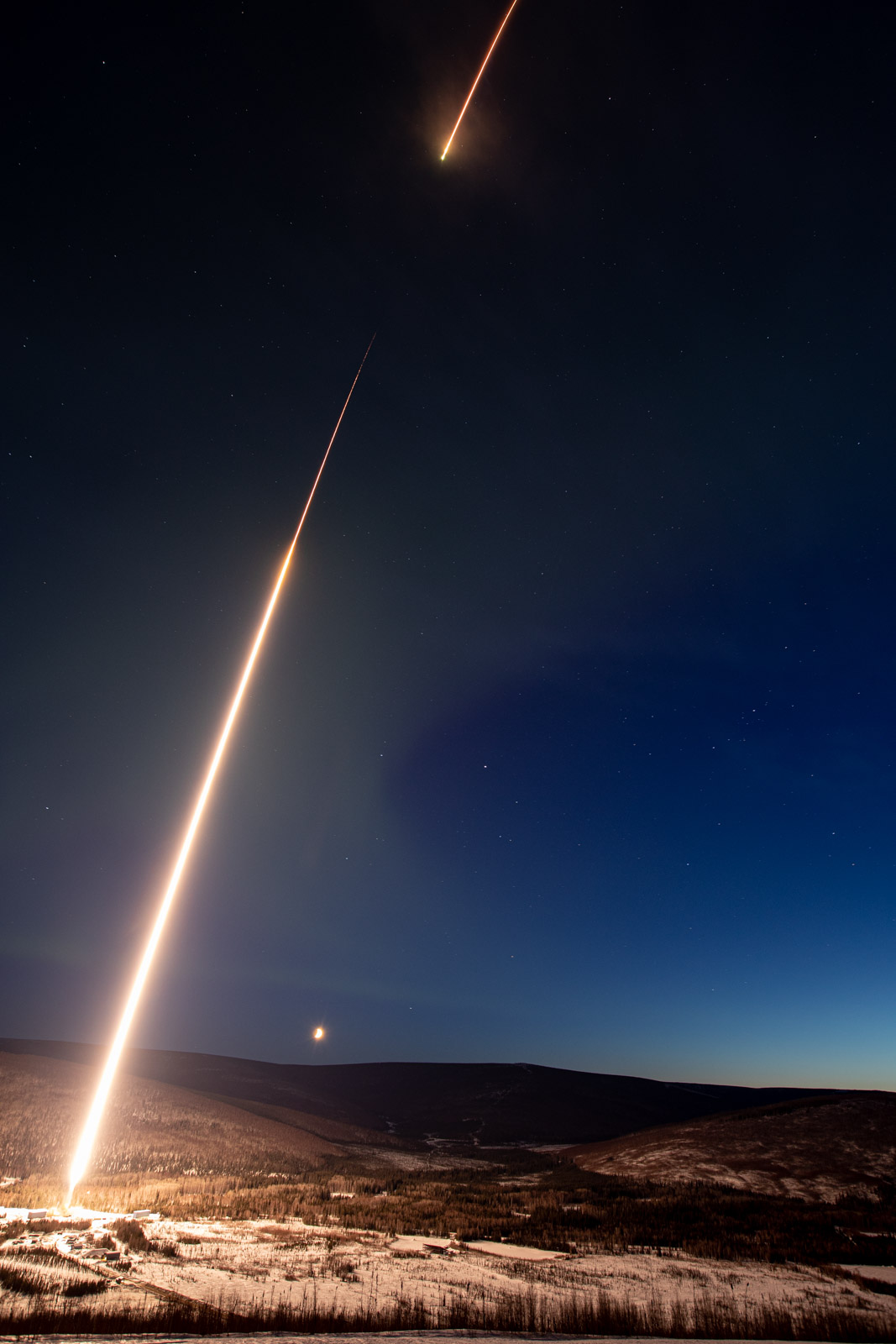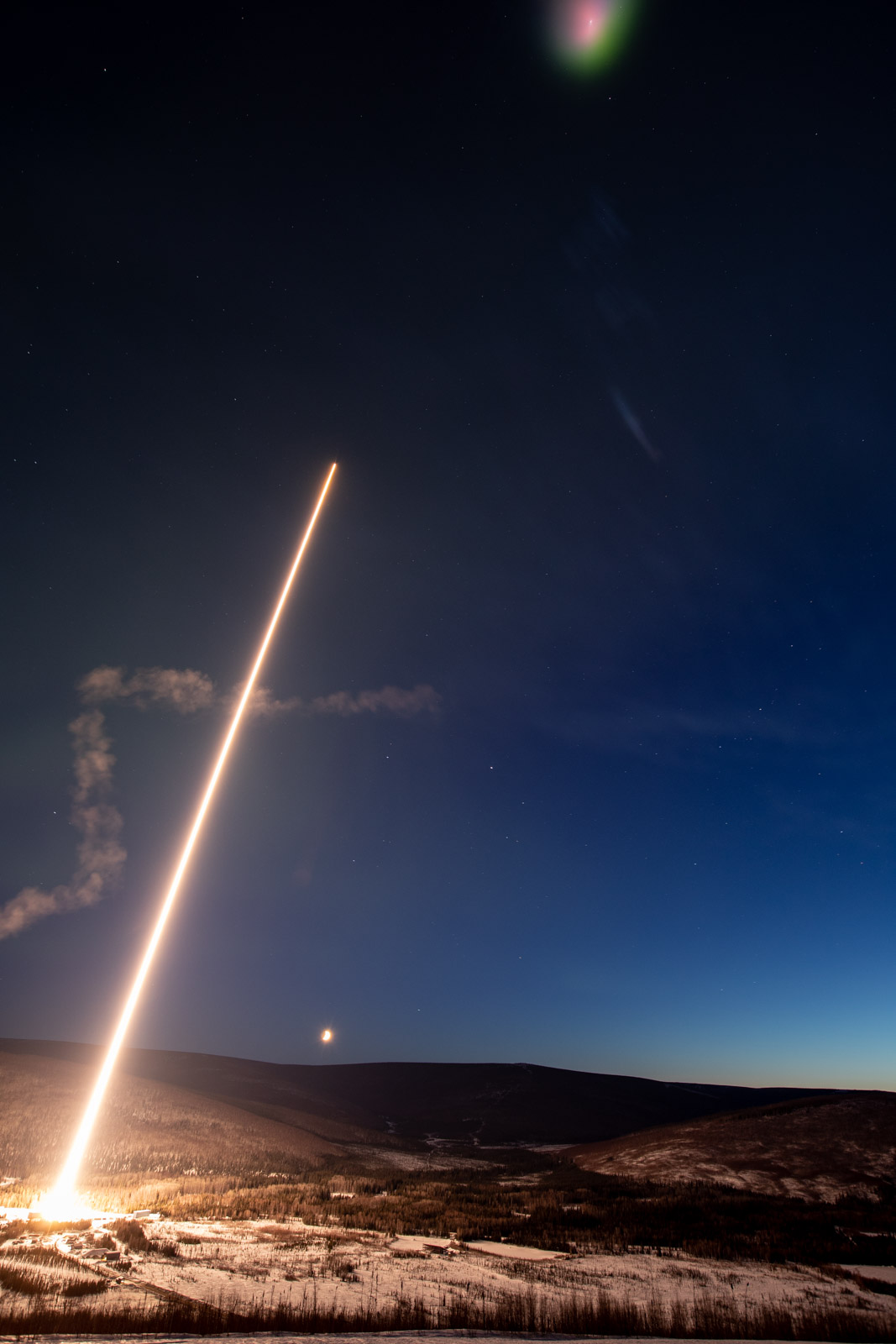Two sounding rockets soared northward from Poker Flat Research Range early Thursday morning in an experiment to study how energy behaves during an aurora.
The launch occurred on the final day of a 16-day window when a good combination of science and weather conditions occurred. Unacceptably high wind speeds were a particular problem in recent days.
The first of two NASA rockets in the Ion-Neutral Coupling during Active Aurora experiment launched from the rocket range north of Fairbanks at 4:47 a.m., followed three minutes later by the second rocket.
Assistant professor Stephen Kaeppler of Clemson University is the principal investigator. Space physicist Mark Conde of the University of Alaska Fairbanks Geophysical Institute is a co-investigator.
The INCAA experiment seeks to better understand what happens to energy from the solar wind after it reaches Earth’s magnetosphere, the shield that protects Earth from the solar wind.
Specifically, the experiment seeks information on how and at what altitude energy is transferred and dissipated from the magnetosphere to the ionosphere-thermosphere system, which reaches from about 50 miles to 400 miles above the planet’s surface.
It also seeks to understand how the interaction of the neutral thermosphere with the overlapping charged ionosphere affects the location of the energy transfer.
The first rocket was a two-stage Black Brant IX carrying a number of tracer payloads. The second rocket was a smaller two-stage Terrier-Improved Malemute carrying instruments.
The University of Calgary and the University of California, Berkeley are also involved in the research.
The experiment had a separately funded component that used UAF’s High-frequency Active Auroral Research Program facility in Gakona. The National Science Foundation funded that component.
Thursday’s launches were the second and third at Poker Flat this year. The Loss through Auroral Microburst Pulsations experiment launched on March 5.
The University of Alaska Fairbanks Geophysical Institute owns Poker Flat, located at Mile 30 Steese Highway, and operates it under a contract with NASA’s Wallops Flight Facility, which is part of the Goddard Space Flight Center.
